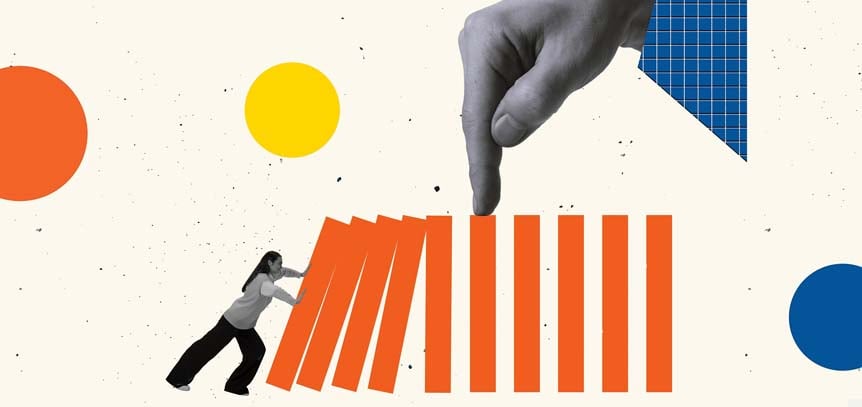
How to Use Content as Part of Your Website User Experience
Creating compelling content is hard work, but it’s one of the most valuable investments you can make in your site.
You may have a great product and great web design, but without one crucial ingredient, you will still struggle to make sales. That ingredient is content. Whether we’re reading a blog post, watching a video, scrolling through Facebook or just checking emails, we all encounter content every day. So perhaps it’s not so surprising that it’s also the key to creating a successful user experience for your B2B website.
What is the buying cycle?
If you want to create an effective website user experience for your visitors, you first need to understand the buying cycle. It’s a pretty simple concept, based on the idea that most of the time people don’t buy on impulse. Instead, they go through a process leading up to a purchase. It begins when they become aware of your product or service, continues as they assess whether it will meet their needs and weigh up their options, before going on to make a purchase. This isn’t the end, though, because it should be followed by further purchases as you resell, cross-sell and upsell to the customer.
Guiding people through the buying cycle depends on understanding what your customers are looking for, and using this to provide them with a positive user experience.
Content is (still) king
The phrase “content is king” has become a cliché. But that doesn’t make it any less true. Content on your website is like the fuel in a car. You may have a top of the range model with the best engine, looks, and specification, but without fuel it will go nowhere. Just as a car needs fuel, your website needs content to drive visitors through the buying cycle.
To create content that converts your prospects, you need to look at things from your target audience’s viewpoint. What issues is their business facing? What problems do they need solving? At each point in the buying cycle, what questions are they asking themselves?
Now think about what value your content will provide to these people. Effective content always has a purpose – it may be to inform, reassure, inspire, or entertain – or perhaps a combination of all of these. But you should always be clear in your mind what it is.
A good way of working out what kind of content will engage people is to create buyer personas – fictional, idealised representations of different types of customers. You can base this on information you have about existing customers, as well as additional research and educated guesswork. Conversations between your marketing and sales teams can be really useful here, because sales can use their experience from discussions with customers to advise on the kind of information that leads are looking for at different stages of the buying cycle.
You should try to develop as detailed a picture as possible, and think about your prospects’ lifestyles and interests, as well as their work challenges.
It’s worth making the effort: a study this year by Cintell found that companies who exceed lead and revenue goals are over twice as likely to create personas than companies who miss these goals.
Developing a content strategy
Once you understand your target audience, you’re ready to start planning the content you will create and developing a strategy. Think about what you will say, but also how and where you will say it. Blogs, downloadable guides, and whitepapers are tried and tested options, but you could also think about webinars, videos, podcasts, and social media posts. You should develop a mixture of content that will resonate with your audience at different points during the buying journey.
Your knowledge of your target market should influence the media you use as well as your messaging. If you’re targeting millennials then you may share content on Twitter and Instagram. If you’re targeting senior managers, then you may opt for LinkedIn and hosting webinars. Remember that content should be tailored not just to the target audience, but also to the point they are at in the buying cycle.
Keep at it with a content calendar
Content is a long-term investment, not a one-off: you need to keep going with it in order for it to be successful. Creating a content calendar is a good way of keeping up the momentum. This is a spreadsheet or other planning template that, for the next few months, lists the topics you will create content on and where they will be publish. It’s also a good idea to note which persona it is targeted at, and where they are in the buying cycle.
A content calendar gives you a timetable to stick to. It also helps you keep track of whether you’re creating content that fits your strategy and resources, or whether there are gaps that need filling.
4 key things to think about
Creating great content means thinking about a lot of different things. Here are four of the most important.
Identify who the user is
First of all, you need to get to know your users. Create buyer personas that describe the people you want as customers: their job, their interests, and the problems they need solving.
Develop a strategy
Now you know what your customers are looking for, think about the content that can engage them. Develop your ideas into specific pieces of content, each with a clear purpose, and plan when and where you will publish them using a calendar.
Optimise for the best results
Once you are clear about the goals of your content, you can optimise it to give it the best chance of success. Make sure it contains the right keywords, be clear about the value you are offering, and drive results with well-placed calls to action.
Think desktop and mobile
People will be reading your content on both desktop and mobile devices. So as well as having a responsive design, remember to keep your content mobile-friendly, with clear copy and short, pithy headers.
Paying off over the long term
Considering the central role that content plays in an effective B2B website, it’s no surprise that a Content Marketing Institute survey found that 76% of B2B marketers planned to increase the amount of content they produce this year. They understand that producing good content is a crucial part of generating and converting leads.
Content might be hard work, but it’s one of the most valuable investments you can make – as well as being great fun. Taking the time to create great content not only helps you communicate to leads and customers better, it also has other business benefits such as clarifying your goals within the organisation and increasing staff engagement. Once you’ve publish, you’ll be reaping the results for months or years afterwards.
Takeaways:
- You may have a great product and great web design, but without content, you will still struggle to make sales.
- A good way of working out what kind of content will engage people is to create buyer personas – fictional, idealised representations of different types of customers.
- Content is a long-term investment, not a one-off: you need to keep going with it in order for it to be successful.
Find out how you can use content alongside other tools to generate and convert leads. Download The CMO’s Guide to Lead Generation Websites
Read the latest positioning trends and insights.
Tap into our brand and product positioning, storytelling, and creative expertise to inspire your next strategic move.

